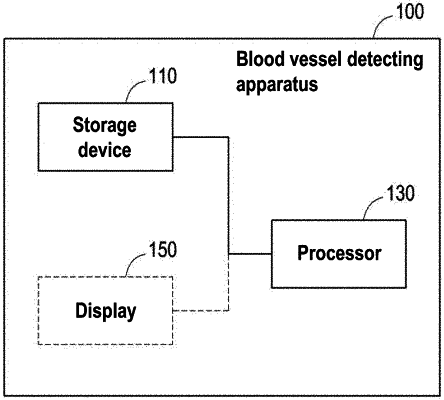| CPC A61B 5/489 (2013.01) [A61B 5/7264 (2013.01); G06T 7/11 (2017.01); G06T 7/149 (2017.01); G06T 2207/30096 (2013.01); G06T 2207/30101 (2013.01)] | 12 Claims |

|
1. An image-based blood vessel detecting method, comprising: detecting first to-be-evaluated data through a first detecting model to obtain a first detection result, wherein the first detecting model is constructed based on a first machine learning algorithm the first to-be-evaluated data comprises at least one medical image obtained from photographing a blood vessel, and the first detection result output by the first detecting model comprises at least one pixel of the at least one medical image belonging to the blood vessel, and the at least one medical image comprises a plurality of medical images sorted based on a time sequence;
detecting second to-be-evaluated data through a second detecting model to obtain a second detection result, wherein the second detecting model is constructed based on a second machine learning algorithm the second to-be-evaluated data comprises the first detection result, and the second detection result output by the second detecting model comprises the at least one pixel in the at least one medical image belonging to the blood vessel; and detecting third to-be-evaluated data through a third detecting model to obtain a third detection result, wherein the third detecting model is constructed based on a third machine learning algorithm, the third to-be-evaluated data comprises the second detection result of a current one of the medical images and the second detection result of a previous one of the medical images, the third detection result output by the third detecting model comprises a major blood vessel in the at least one medical image, and the major blood vessel is determined based on a weight that evaluates a lesion complexity of a plurality of blood vessel segments.
|